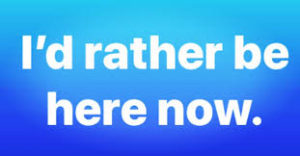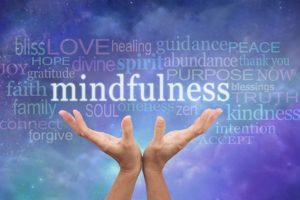 There is a lot of talk about mindfulness these days, and there is a lot of research which shows that practicing it leads to better physical and mental health. It’s highly recommended for people with depression, anxiety, addiction, low confidence, and chronic pain. So what exactly is it and why does it help? Answering these questions is key to clearing up misconceptions that get in the way of people practicing and reaping the benefits.
There is a lot of talk about mindfulness these days, and there is a lot of research which shows that practicing it leads to better physical and mental health. It’s highly recommended for people with depression, anxiety, addiction, low confidence, and chronic pain. So what exactly is it and why does it help? Answering these questions is key to clearing up misconceptions that get in the way of people practicing and reaping the benefits.
What Mindfulness is Not:
Relaxation
Controlling your thoughts
Having no thoughts
Achieving an altered state of consciousness
Positive visualization
Controlling your breath
Getting rid of negative emotions
So What Is It?
Mindfulness is paying attention to what is happening in the here and now with curiosity instead of judgment or an agenda. It’s accepting that things are as they are. The here and now includes what’s happening in your internal experience (thoughts, feelings, body sensations) as well as what’s happening in the external environment (sounds, smells, sights).
Why Does Practicing Mindfulness Help?
I was recently listening to a podcast by spiritual teacher Michael Singer. He made a comment about people who have I’d rather be... stickers on their cars. He said, “If you have one of those stickers, I feel sorry for you, because you’re not fishing, you’re driving your car.” We all know that the spirit of those stickers is to express a hobby or interest, and, they point to a fundamental problem we all wrestle with, which is we often struggle against the present moment because it’s painful or not to our liking. How do we struggle against it? We check out. We eat mindlessly. We spend money on things we don’t need. We look at our phones. The problem with this approach is that the emotion from the unpleasant experience doesn’t go away when avoid it. It accumulates, and our bodies become a storage space full of “stuff” we’ve stashed and overlooked to be dealt with at a later date. We pay a price for this storage space through anxiety, depression, explosive anger, unhealthy relationships, and addiction. The practice of mindfulness gives us a structure for gently and compassionately being with what is, instead of accumulating more suppressed emotion. Sometimes, with practice, we also get to experience what happens when we follow the out breath, and let go.
How do You Practice It?
Sit comfortably upright. You can close your eyes, or allow your eyes to softly gaze downward. Feel the details of your breath, the rising and falling of your chest. Notice other things happening right now. Did you just eat lunch and your stomach is full? Can you feel your feet on the floor? Are birds chirping outside an open window? Are you anxious about an upcoming event? There are many layers to the present moment. Use your breath as an anchor—something to come back to when the waves of the mind pull you into the undertow of the past or the future. The skill is learning to recognize when your attention is not in the present, and kindly return to your attention to the here and now. We do that again and again and again.
The Right Tool For the Right Situation:
“If all you have is a hammer, everything looks like a nail.” ~ Abraham Maslow
Different practices besides mindfulness can also support mental health. For example, parasympathetic breathing (extending the exhale) can be very helpful for people experiencing high levels of anxiety. Doing a body scan to purposefully release tension can help with sleep. Those are different tools with different intentions, and they have their rightful time and place. Relaxation, noticing the passing of a difficult emotion, or experiencing an altered state of consciousness, might actually be the outcome of mindfulness practice, it’s just not the intention.
How Much Should I Practice?
A general guideline is 20 minutes a day. If you are having trouble carving out the time, weave it into your daily routine. Practice at red lights, while standing in line, walking to get your mail, or cooking dinner. Make whatever you are doing the object of your meditation. I find this helps the practice not be something separate from everyday life.
There’s An App For That!
If you are finding you need some structure, you could try listening to guided mediations. Here are a few apps that have both free and paid subscriptions:
The Mindfulness App
Headspace
10% Happier
Did You Know Mindfulness is a Super Power?
Still needing some motivation to get started? Check out this 3 minute video by Dan Harris:
https://www.youtube.com/watch?v=w6T02g5hnT4


